
He is given six photographs to choose an inlay for a surfboard from but skips over the obvious choices (waves or anything relating to surfing). Rather he chooses an image that doesn’t make sense, figuratively or literally. I knew then that I was working with an individual willing to take a chance, make a statement and stand by it!
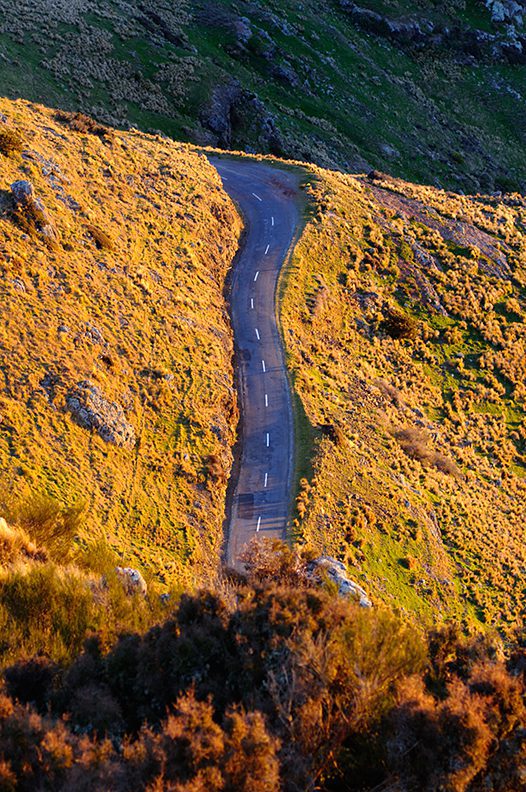
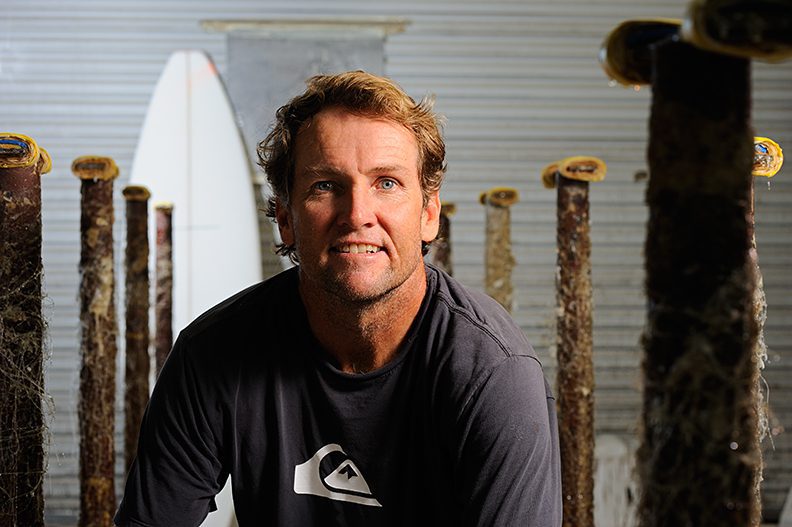
Of course the final image selection rested with me and enthusiastically I agreed with Matt’s pick. It had been my secret desire to use it all along even though no one selected it when posed with the six possibilities. Gut feeling won out, thankfully, and thus the tale of how “Road to Discovery” came to be.
Matt is an experienced and innovative shaper who works out of an industrial bay on a dead end road next to a seldom used rail road track. There’s nothing fancy, unique or even clean about it. His shaping room could use major foam dust removal. The glassing, airbrushing and polishing areas are more interesting because of what you find taped to the walls or the color residue caked on the racks. The office has clearly never met an organized hand. One could say character is well hidden but nonetheless very prevalent.


All of that hides the fact that Matt is a detail oriented individual and shaper who spends an incredible amount of time fine tuning his shapes. He is also very proud of the fact that his boards are 100% hand crafted and that countless hours are spent in the water testing his designs.
Matt suggested shaping a 6 foot “Diamond Cutter”, a very popular diamond tail design in today’s surfing. It was also different from the other boards in my slowly increasing collection. A modern, short board shape would be an excellent addition. What truly differentiates this board from the others though is that it’s the first one where a pin line was not used.

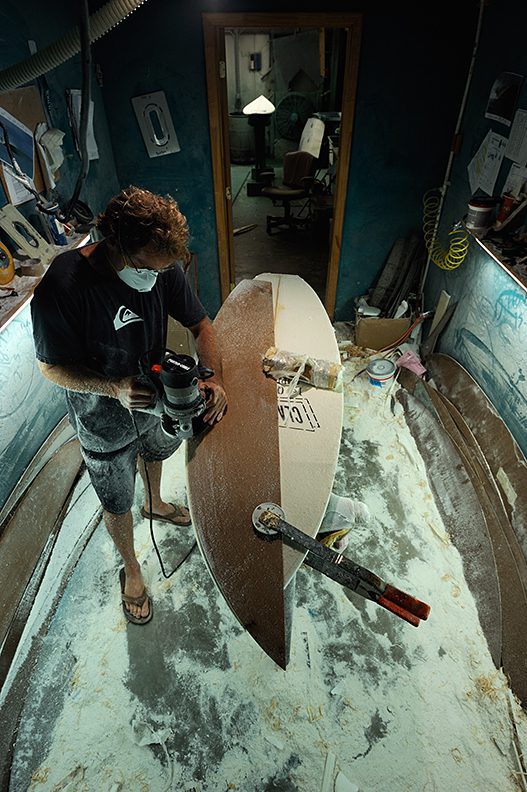
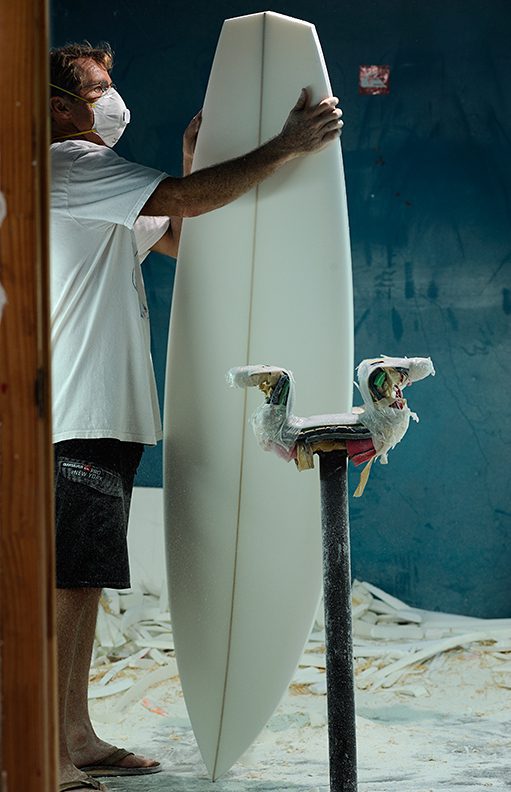
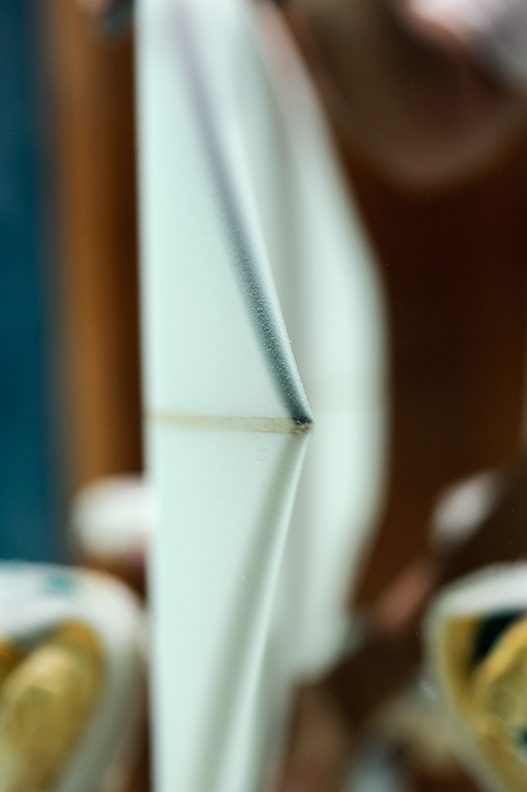
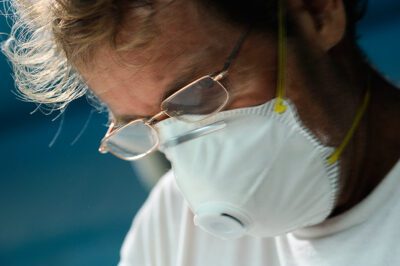
When I brought the finished print to the factory Matt was surprised to see that I had printed the image area to the exact shape of the board. His thought was to use it as is. However he still needed to cut out the image from the 24″ wide, 7′ long material that it was printed on. Using a sharp razor blade and the templates he used to shape the board with we carefully and slowly cut away the excess printing material. Leaving a perfectly shaped print there was no reason to tape off the area where the print would go and to use pin lines to cover up the inevitable mistakes along the cut line. In addition this method allowed for more of the image to be seen.
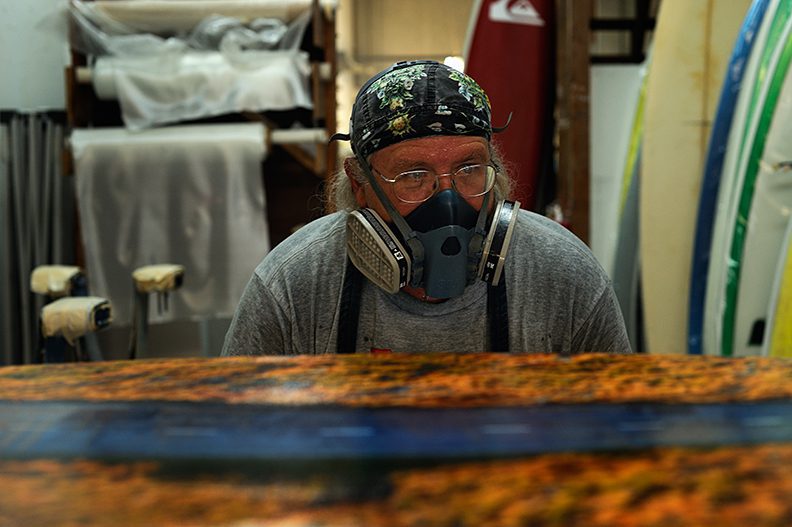
 Andy, the glasser, did a fine job aligning and fixing the print onto the shaped blank with resin and later fiber glassing the board. The air-brusher added a green band, matching the green seen in parts of the photograph, to an otherwise clear deck. I’m very careful to avoid clashing with the image with colors or design elements featured on the opposite side but this was not the case. The finished board is an eye-catching, beautiful piece!
Andy, the glasser, did a fine job aligning and fixing the print onto the shaped blank with resin and later fiber glassing the board. The air-brusher added a green band, matching the green seen in parts of the photograph, to an otherwise clear deck. I’m very careful to avoid clashing with the image with colors or design elements featured on the opposite side but this was not the case. The finished board is an eye-catching, beautiful piece!
Working with Matt was a treat and an honor. I’m excited with the attention this board was given in the design phase, in the use of a rare Clark Foam blank and in the detailed and laborious hand shaping, glassing and polishing work Matt and the guys executed. It’s another board that could serve equally well in the water under the feet of a skillful surfer or as a display of art and craftsmanship for someone with an appreciation for both.
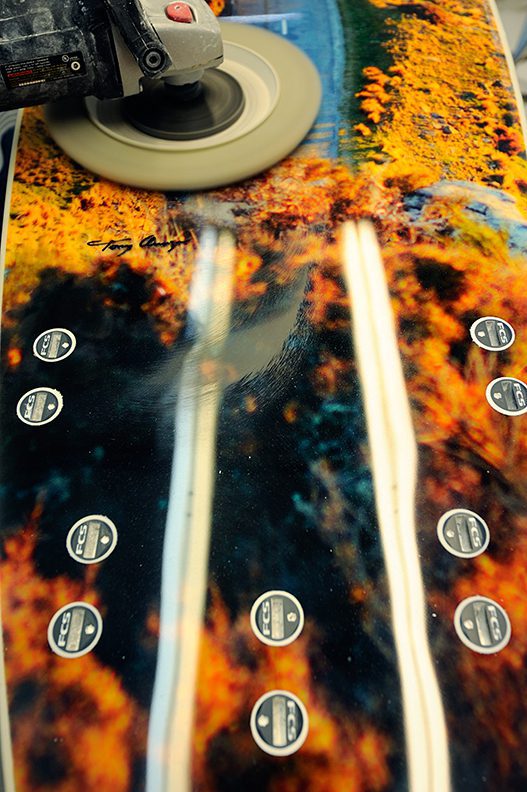

sweet board and of course great art work Tony! Can’t wait for a palm beach swell, winter hasn’t been to good…
Saludos,
Frankie
great job, amazing piece of Art! I am from Canary Islands and I’d like to know what kind of paper did you use and what kind of printer can print if this paper is very thin… I am really curious about this.
Congratulations for your work!